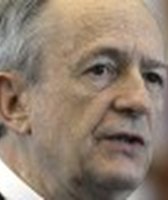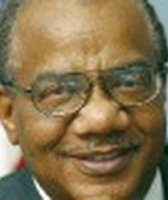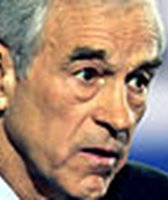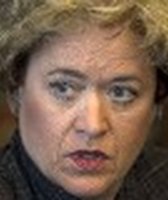Get PolitiFact in your inbox.
Perry campaign says in blog that Trans-Texas Corridor is dead
Eight years after Gov. Rick Perry proudly introduced his plan for the future of transportation in Texas, his campaign declared that vision null and void in a blog post during the Republican gubernatorial debate Thursday night.
"The Trans-Texas Corridor is dead," said the post, which was entered at 7:26 p.m.
The TTC -- unveiled in January 2002 as an approximately $200 billion plan for 4,000 miles of toll roads, rail lines and utility lines criss-crossing Texas in bundles -- has become an issue in the GOP primary contest between Perry, U.S. Sen. Kay Bailey Hutchison and Debra Medina, a businesswoman from Wharton. Hutchison has released online ads alleging that the controversial initiative, which drew the wrath of Perry opponents and some allies, is alive and well. One of the most vocal critics of the corridor idea was the Texas Farm Bureau, because it would have required the state to acquire a considerable amount of farmland.
We decided to investigate the health of the Trans-Texas Corridor.
The Texas Department of Transportation pronounced the TTC dead, in concept and in name, in January 2009. But some remnants of the project are still on the books.
For one, the Trans-Texas Corridor concept remains in the state’s Transportation Code and other official documents, which Hutchison says is evidence that the project endures. An attempt to remove those references failed during the 2009 legislative session with the death of a measure regulating the Texas Department of Transportation.
As for the road projects that were envisioned under TTC, only two were still kicking after January 2009: the centerpiece, a tollway twin to the Interstate 35 corridor that would run from Dallas to San Antonio, and Interstate 69 between the Rio Grande Valley and Texarkana.
But the I-35 twin was buried in October 2009 when a state environmental study of several years’ duration concluded with a "no-build" recommendation. The only vestige of that plan is the 49 northernmost miles of the Texas 130 tollway, which skirts the Austin area’s eastern edge from Georgetown to Mustang Ridge, and another 40 miles south from there to Seguin that are under construction by a private consortium. However, that project was under way before Perry proposed the TTC.
The I-69 project lives on and is currently in the planning stages.
However, two years earlier, in 2007, the Legislature dealt a major blow to one of the main tenets of the TTC — for the state to issue long-term leases to private companies to build and operate toll roads — by placing a moratorium on new public-private toll road partnerships, with several exceptions. That moratorium in effect became permanent last year when the Legislature failed to extend the authority for such leases beyond Sept. 1, 2009.
The roads in the corridor plan technically could be built without public-private partnerships, but the state doesn’t have the money to do so. In any case, rural opposition to building any sort of twin roads to interstates was at the heart of the plan’s collapse.
The I-69 initiative was one of the exceptions to the moratorium, but only a section of the approximately 600-mile road, the piece south of Refugio, can be a public-private partnership. And Chris Lippincott, a TxDOT spokesman, said that the decisions about exactly where the road will go and whether it will be tolled have not yet been made. The Texas Transportation Commission ordered that the road be laid down over existing highways, with free frontage roads alongside, except in areas where there is not an existing highway. This is much different from the original Perry concept of entire new road, rail and utility corridors.
Texas still has a long-term transportation plan, but it’s not the TTC. In a January 2009 statement describing the changes being made to TTC, Amadeo Saenz, executive director of TxDOT, said that the new plan would be called Innovative Connectivity in Texas/Vision 2009 and that any projects that had existed under TTC, such as an I-35 twin, would be developed individually, if they happened at all.
Summing up: We found that some language in the state Transportation Code and the much-altered highway I-69 project survive from Perry’s original TTC vision. But its centerpiece paralleling I-35 is truly dead, and beyond that, the corridor plan retains only a faint statutory pulse. We rate Perry’s statement as Mostly True.
Featured Fact-check
Our Sources
Rick Perry, campaign Web site, debate blog, Jan. 14, 2009
Austin American-Statesman, "I-35 toll twin officially dies," Oct. 7, 2009
Austin American-Statesman, "Senate resists TxDOT change," May 26, 2009
Austin American-Statesman, "Corridor dies, but parts of plan alive," Jan. 7, 2009
2009 Texas Legislature, House Bill 300
Texas Department of Transportation, "TxDOT Announces Updated Vision for Trans-Texas Corridor," Jan. 6, 2009
Interview with Chris Lippincott, spokesman, Texas Department of Transportation, Jan. 13, 2009
Browse the Truth-O-Meter
More by Meghan Ashford-Grooms
Perry campaign says in blog that Trans-Texas Corridor is dead
Support independent fact-checking.
Become a member!
In a world of wild talk and fake news, help us stand up for the facts.

















































